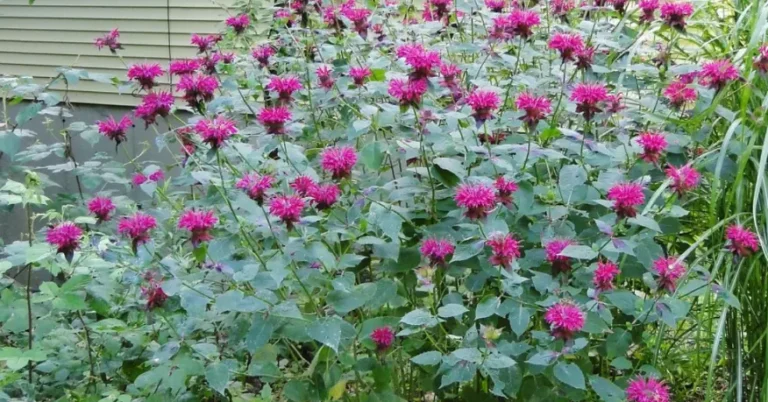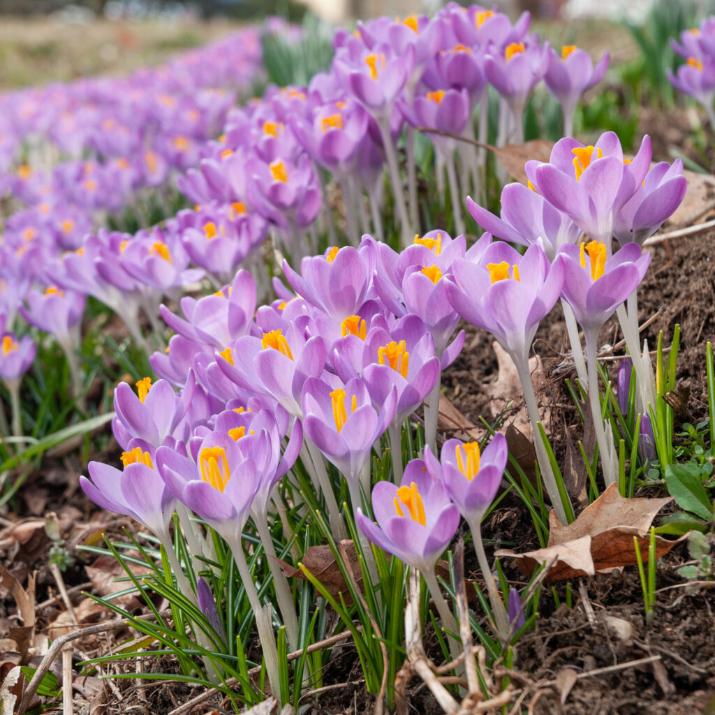Surprised by Figs at Eisenhower Park
I always read the weekly CCE Farmers Market newsletter, but this time, I barely glanced at the words “Fig Fare.” I was curious — vaguely — but I’ll admit, I had no idea what it actually meant. A fig fest? At a farmers market? I pictured a table or two of fruit, maybe some jam. What I walked into was a full-blown fig frenzy — and I loved every second of it.
Turns out, there’s an entire fig-growing scene on Long Island — passionate, knowledgeable, and surprisingly well-organized. The Long Island Fig Network (yes, that’s a real thing — find them on Facebook) has over 4,000 members, and today, they showed up at Field 8 in Eisenhower Park in style. Before I even set up my Backyard Bees table, I wandered over to see what all the buzz was about — and was immediately welcomed by fig fanatics eager to share their stories, growing tips, and a slice of their sticky-sweet world.
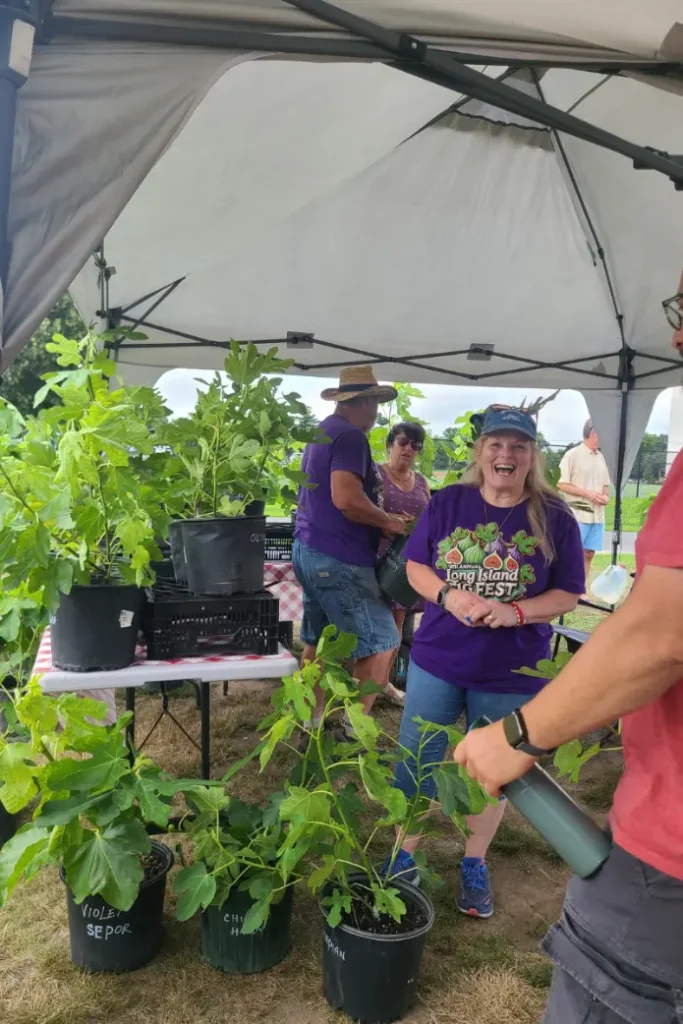
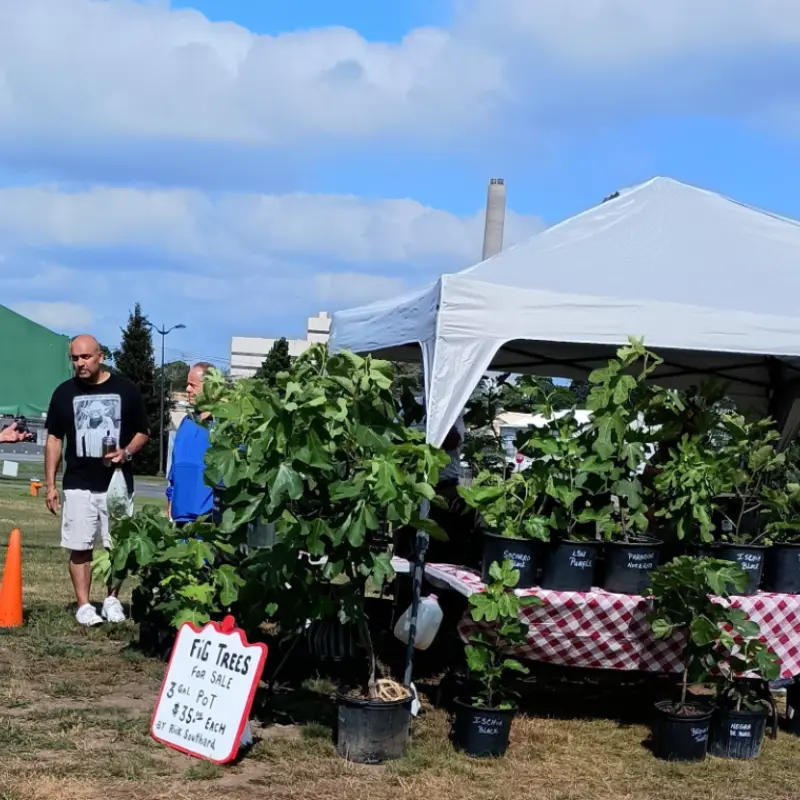
Despite the humid July heat, these growers were glowing with enthusiasm, rattling off advice and stories like proud fig parents. Their energy was infectious. In no time, I walked away with a head full of tips… and a fig tree of my own — a beautiful Ciliega Dulce (Sweet Cherry Fig) — my very first fig baby. I was warned that “fig growing can be addictive” — and judging by the woman who confessed to having over 400 fig trees on her property, I consider myself forewarned!
Bee-ginners Luck
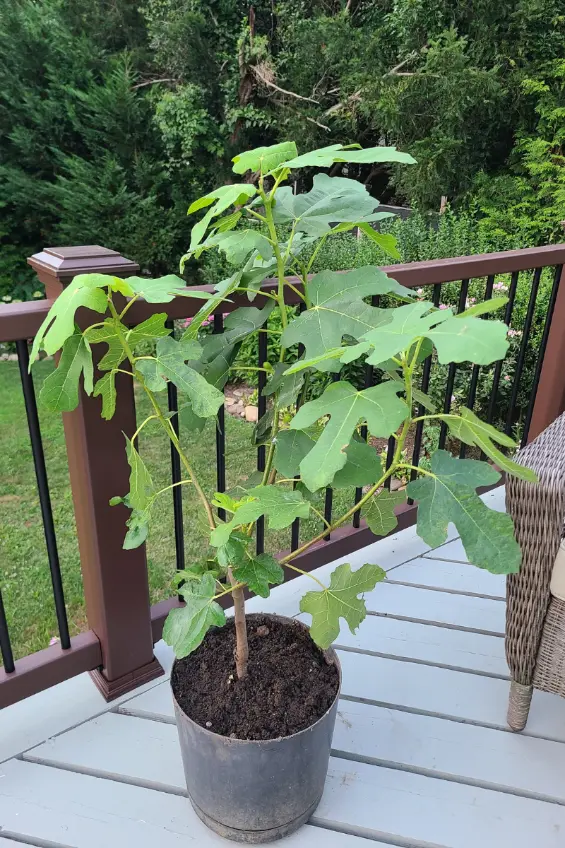
As a beekeeper and naturalist, I’ve always been drawn to fruiting plants, even if figs famously do their pollination business with tiny fig wasps instead of bees. My husband, whose roots trace back to Sicily, grew up with figs in his backyard — though, somehow, he inherited only the love of eating them, not growing them. Looks like I’ll be taking the lead on this one.
As I said, I didn’t have much time, so I quickly pointed to one tree — the Ciliega Dulce — and asked them to set it aside while I got my Backyard Bees display up and running. Apparently, that little move was beginner’s luck at its finest. The Ciliega Dulce is a coveted fig variety, known for being hard to find, and out of the hundreds of fig trees at the market that day… I had claimed the only one.
A bit later in the morning, I noticed someone buzzing around my tree — and yes, I’d mentally claimed it, even if I hadn’t officially paid yet. I quickly swooped in, handed over the cash, and brought my fig baby a little closer to me… just in case.
But not long after, I spotted the same woman hovering near my tent — once again eyeing the Ciliega Dulce. She was clearly smitten. She described it as a small, sweet fig with a cherry-like flavor and told me it’s cold-hardy in our growing zone — meaning it can thrive either in the ground or in a pot. Then she dropped the real fig gossip: this particular tree is hard to propagate from cuttings, which makes it rare. She even started explaining how to do an air graft — something I’d heard of, but definitely wasn’t ready to try on Day One of my fig-growing journey.
We exchanged contact info, just in case I decide to share a cutting one day… or need a little fig-growing mentorship. (She mentioned something called an air graft — which, if you’re curious, you can watch a video from Cornell ‘s School of Integrative Plant Science )
The Bee Connection: Why Figs Matter to Pollinators
As a beekeeper, I naturally gravitate toward bee-friendly plants — anything that might be a good match for my pollinator garden. So when I brought home a Ciliega Dulce fig tree, I felt the need to offer a little justification. And yes, I also had to clear up that lingering rumor about “dead wasps inside figs.”
The first thing to know is that there’s a big difference between wild figs (typically found in tropical parts of the world) and the common figs we grow in our gardens or buy at the farmers market.
In the wild, figs have a fascinating — and rather intense — relationship with a tiny insect called the fig wasp. The female wasp crawls into the fruit through a natural opening and lays her eggs inside. While she’s in there, she brushes against the fig’s internal flowers, pollinating them from the inside out.
This mutual relationship has been going on for millions of years. The fig provides a safe space for the wasp’s offspring to develop, and the wasp, in turn, ensures the fig’s pollination. Eventually, the next generation hatches and flies off to repeat the cycle.
🐝 Want to Go Deeper?
Curious about those tiny wasps inside figs? This free Bon Appétit article walks you through the fascinating fig–wasp mutualism—how wasps pollinate from within, die en route, and are completely digested by the fruit’s enzymes—so all you end up tasting are seeds.
It’s true that not every wasp makes it out. Some die inside the fig — and here’s the part that gives people pause: the fig produces special enzymes that break down and digest any leftover wasp remains. In other words, nature handles its own cleanup.
But here’s the important part: my Ciliega Dulce is not a wild fig species. It’s a self-pollinating variety — like most of the figs we grow here on Long Island — and it doesn’t require fig wasps at all. No wasps. No eggs. No secret crunchy surprises.
Justification complete.
Honeybees aren’t necessary for figs to thrive, but they’re still welcome visitors. Bees may stop by a fig tree for shelter, a landing pad, or sheer curiosity. And just like any healthy, fruiting plant, fig trees contribute to a biodiverse ecosystem where pollinators of all kinds can find a place.
Conclusion
I may not have planted this fig tree for my bees, but I’d like to think they’ll appreciate having it nearby — even just for the company.
And to think, I almost skipped right past that “Fig Fare” line in the newsletter. I had no idea I’d walk away with a rare fig tree, a handful of new plant mentors, and a head full of pollination facts I never knew I needed.
As someone who’s spent years learning from the rhythms of nature — from bees to blossoms — I should’ve known better. Figs, it turns out, had a whole story to tell. And I’m so glad I listened.
Now, to celebrate my unexpected fig journey, here’s a sweet, fig-forward recipe from Abby Riccardo of Herb & Crumb…
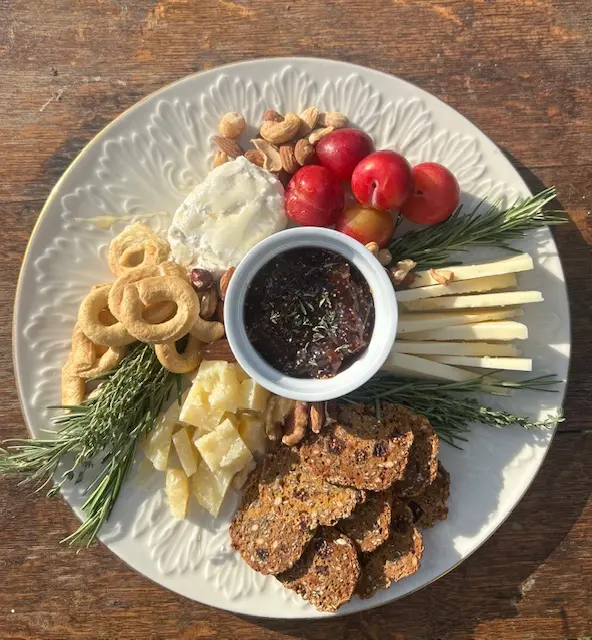
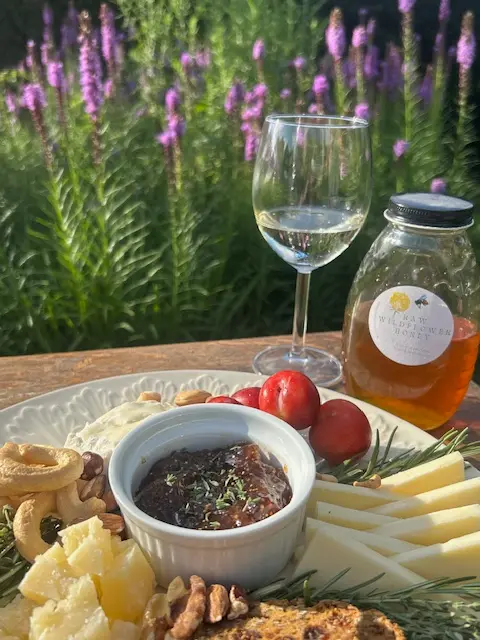
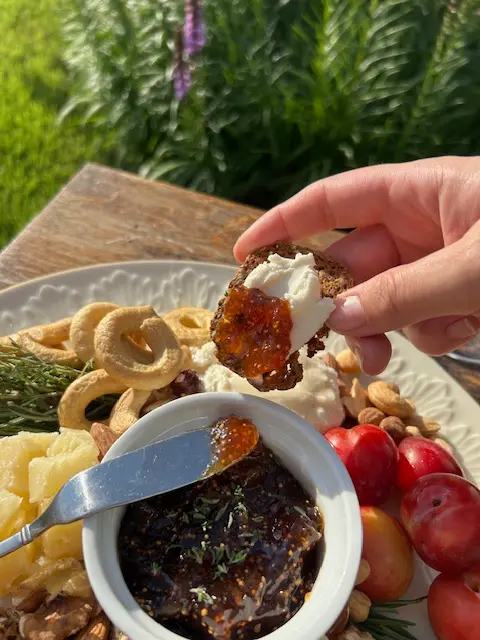
Sicilian Honey & Fig Jam, crafted by Abby Riccardo of Herb & Crumb — a sweet nod to my husband’s roots and the unexpected fig journey that inspired it.
Sicilian Honey & Fig Jam
By Abby Riccardo, Herb & Crumb
This recipe comes from the talented Abby Riccardo of Herb & Crumb — a chef, stylist, and food creative whose gorgeous custom charcuterie boards and thoughtful ingredients reflect her time living and cooking in Italy. I’m so grateful she shared this fig-forward jam, inspired by both Sicilian flavors and the honey I bring to every table. Abby co-owns Herb & Crumb with her sister, Samantha Riccardo.
👉 Download the printable recipe (PDF) Print it, pin it, or share it with your favorite cheese board lover.
Yields: ~3 cups
Prep time: 30 minutes (maceration)
Cook time: ~30 minutes
Ingredients
- 2 pounds ripe fresh figs (trimmed and quartered)
- 2 oranges (zest and juice)
- 1 lemon (zest and juice)
- 1½ cups raw Backyard Bees wildflower honey
- ½ cup cane sugar
- 2 sprigs fresh thyme (optional)
- Pinch of salt
Instructions
Step 1: Macerate
In a medium to large pot or bowl, add:
- figs
- orange juice and zest
- lemon juice and zest
- honey, sugar
- thyme (optional)
- salt
Gently stir and let the mixture macerate for at least 30 minutes.
Abby’s Tip:
If you don’t have a zester or prefer a smoother texture, peel the skin of the orange and lemon into large strips using a peeler. Avoid the white pith — it can taste bitter. Add the strips to the mixture and remove later.
Step 2: Simmer
Place the macerated mixture in a pot (if it’s not already there) and bring to a simmer over medium heat.
- Simmer for 15 minutes, then reduce heat to low.
- Continue simmering for another 15 minutes, stirring frequently.
You’re looking for a thick, syrupy consistency.
Abby’s Tip:
Taste as you go! Remember, the flavors will concentrate as the jam reduces, so adjust sweetness or acidity in small increments.
Step 3: Cool & Store
Once the jam is thick, shiny, and syrupy:
- Remove from heat
- Let cool completely
- Remove thyme sprigs and any large zest strips
- Transfer to jars or containers (plastic is fine if the jam is fully cooled)
Step 4: Serve & Enjoy!
This jam pairs beautifully with:
- Tangy soft cheeses (like goat cheese)
- Salty, sharp cheeses (like pecorino romano)
- Toasts, breads, crackers
Abby’s Serving Suggestion:
For a party-perfect appetizer:
Place a block of brie in an oven-safe dish. Score the top, then dollop fig jam all over. Add a few thyme sprigs and a little orange zest. Bake at 350°F for 10–15 minutes, or until bubbly. Serve with toast or crackers.
